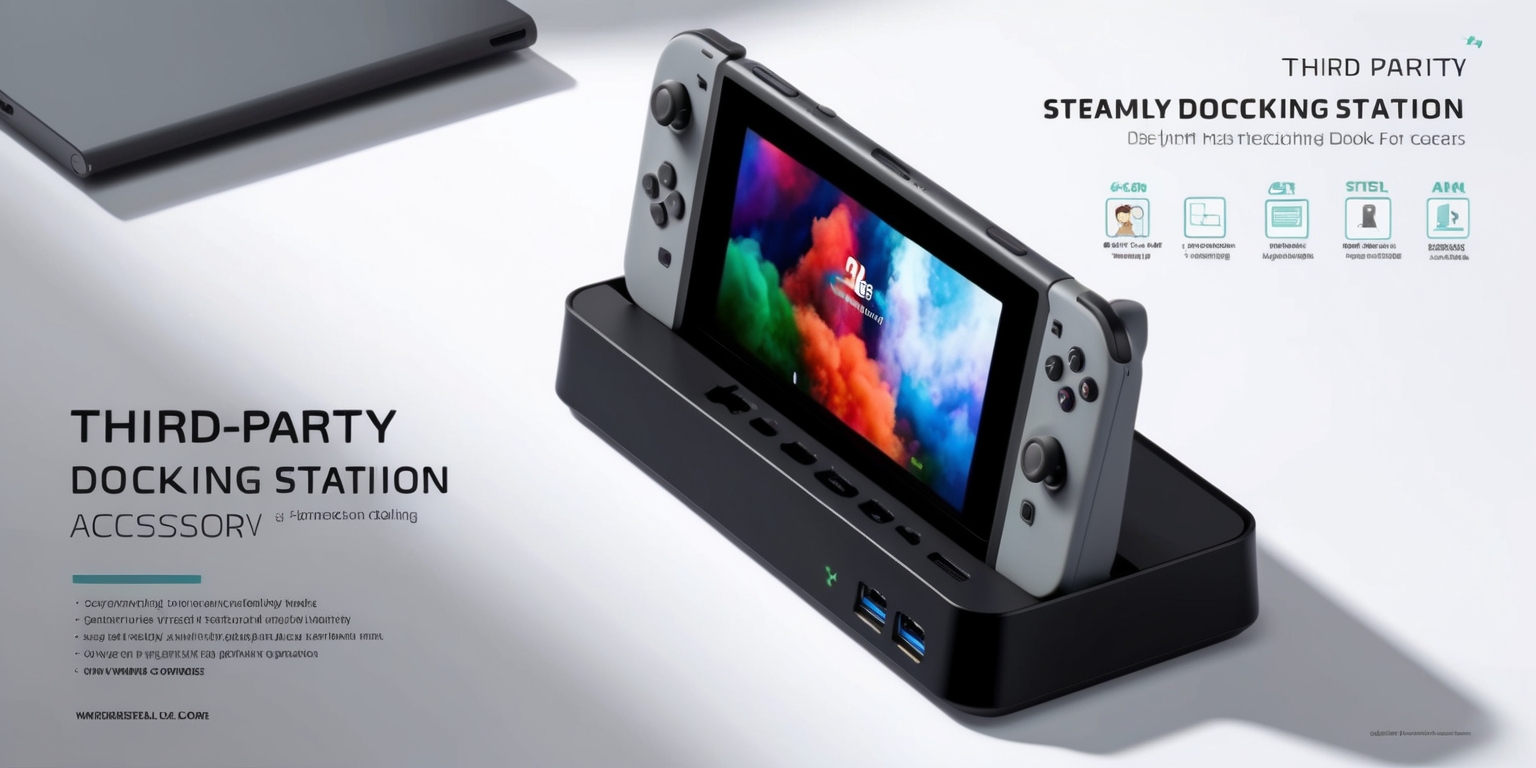
The experience of exploring this new docking solution for a modern handheld is filled with both promise and uncertainties. It offers an intriguing alternative to the official accessory while raising questions about long-term reliability and compatibility. As enthusiasts and casual gamers alike seek versatile solutions for everyday gaming, this accessory steps into the spotlight with a blend of minimalist design and essential connectivity features. Its presentation appears to be a calculated nod to the original’s aesthetics while simultaneously introducing subtle compromises. Upcoming sections explore a variety of dimensions related to the… device, examining its physical design, handling, performance under pressure, connectivity options, and even thermal considerations. Each segment sheds light on how this docking station adapts to the evolving demands of modern gaming technology.
Physical Design and Form Factor
This accessory presents itself with a refined and pared-down design that speaks of simplicity and efficiency. The overall shape adopts a gentle wedge-like form which allows the handheld console to rest securely upon it. The exterior surfaces feature hints of color coordination that align with the identity of its corresponding gaming device, creating a sense of belonging to a larger ecosystem even if the design remains understated. Notably, the absence of guiding walls is a deliberate choice, enabling a more open cradle that still offers reliable stability. Refinements in the aesthetic decisions may not be revolutionary, yet they clearly signal an intention to be both utilitarian and visually compatible with the original console. Despite its modest appearance, the structure manages to encapsulate the essentials required of a docking station in a competitive market, even if some design refinements might have elevated its appeal further.
Ergonomic Handling and Usability Aspects
The docking station’s handling characteristics are a mixed bag, integrating innovative ideas with certain usability trade-offs that demand attention. Once the device is placed on its platform, the configuration provides a secure ecosystem where the gaming handheld finds a stable resting platform. However, the method by which the console is detached from the dock requires manual intervention. Rather than relying on an automatic pop-off mechanism, users must carefully lift the handheld and disengage the dock from its bottom connector. This hands-on extraction process can be considered a mere hassle, particularly in situations when one considers prolonged sessions that demand frequent transitions between TV mode and portable play. In a market where the competition is refining ergonomic details continuously, small issues here become significant considerations, even as the overall design remains serviceable for everyday use.
Connectivity Options and Port Allocation
This docking solution does not compromise on essential connectivity functionalities, providing a selection of ports akin to those found on official accessories. The inclusion of an HDMI 2.0 interface ensures the delivery of a high-resolution signal to larger displays, supporting up to 4K at 60fps, which appeals greatly to gamers seeking crisp images and smooth gameplay. Additionally, two USB-A connections and a USB-C port for power input mirror the established standards, albeit this lineup might seem rather minimal for users who enjoy a diverse range of peripherals. Although enthusiasts sometimes wish for an extra port to accommodate various wired controllers, the current configuration maintains a balance between compactness and functionality. Overall, the station meets baseline connectivity needs without adding unnecessary complexity, ensuring that the core purpose of transitioning between portable and TV modes remains intact.
Internal Construction and Weight Considerations

A striking aspect of the design is the… construction material and the resulting perception of weight. The station is built using an all-plastic assembly which, while not inherently cheap in appearance, leaves a palpable sense of hollowness when compared to more robust alternatives on the market. With the device required to occupy the same horizontal space as the gaming handheld, the internal structure does not optimize for weight distribution, and there is an apparent void that could be remedied by adding additional mass. Some competing options leverage aluminum or incorporate internal weights to provide improved stability and a more premium feel. This lightweight design might contribute to a less secure interface under dynamic conditions, yet it also reinforces the station’s travel-friendly design by keeping the overall accessory compact and portable. The balance struck between sturdiness and portability is a central theme in the engineering decisions behind this device.
Integration with the Gaming Ecosystem
The docking station is designed with seamless integration in mind, particularly in relation to a modern, portable gaming system that frequently shifts between home and on-the-go experiences. It is tailored to function within the boundaries established by the handheld console maker, despite being a third-party solution. The connections are arranged to ensure that, when used in conjunction with the prescribed power adapter and display setups, gamers experience minimal disruption in transitioning modes. The form factor, though more simplified than the official models, establishes an aesthetic harmony with the console through coordinated color details and physical dimensions that align well with the handheld’s design language. This integrated approach reflects a conscious effort to ensure that the accessory It integrates smoothly with the gaming device, even though it omits a few features advanced features and enhancements found in more refined alternatives.
Thermal Dynamics and Cooling Performance
An important aspect of any docking station is its impact on the thermal management of the connected device. This particular model employs a design that, while keeping the unit compact and travel-friendly, inadvertently obstructs a portion of the handheld’s bottom intake vents. Although extensive testing did not reveal any immediate thermal crises, the alteration of airflow is a detail that could have long-term implications during extensive play sessions. The official accessory features integrated cooling elements, a feature left out in this streamlined version, based on the rationale that the cooling system primarily supports the station’s internal components rather than the handheld. With gaming sessions sometimes extending over several hours, even subtle changes in thermal dynamics can become critical. Therefore, the balance between maintaining a slim design and ensuring adequate heat dissipation remains a fine and ongoing challenge.
Functionality Versus Portability Trade-offs
This docking station embodies a delicate balance between delivering core functionalities and maintaining a form factor that is as lightweight as possible. Its focus on serving as a secondary or travel-friendly accessory is evident in the decision to strip away additional bulk and internal cooling components. By doing so, the design supports the convenience of a compact, minimalist solution that easily fits into a portable setup. However, this stripped-down approach comes with inherent trade-offs such as the missing pop-off mechanism for easy detachment and the partial blockage of ventilation slots. While these compromises may be acceptable for users on the move or those who require a backup option to the official device, they highlight an evolutionary step in accessory design. Manufacturers in the future may refine these choices further, but for now, the station presents a serviceable option that considers the needs of traveling gamers meticulously.
Operational Reliability and Firmware Adaptation
From an operational standpoint, the docking station has demonstrated an ability to handle the modern console’s power requirements after overcoming initial firmware challenges. Early models encountered issues with video output until firmware updates were applied, indicating the importance of software compatibility for third-party accessories. Once this hurdle was cleared, the device performed reliably, effectively channeling a 4K 60fps signal across HDMI to a high-end display. The necessity of occasional firmware interventions also underscores the evolving nature of peripheral integration in a landscape where the console’s updates can lead to modifications in accessory functionality. Users investing in this dock are thus encouraged to maintain synchronization with the manufacturer’s update releases. This adaptive approach to firmware management, while not perfect, affords the practical benefits of continuous improvement and refinement over time.
Comparative Observations and Market Positioning
When juxtaposing this docking station with similar accessories available for other handheld systems, it becomes clear that certain compromises have been made in pursuit of a minimalist design. Compared to premium docks designed for competing platforms, this model may fall short in aspects of weight, detachment ease, and robust construction. Enthusiasts note that options available for other gaming systems sometimes include more refined mechanical elements such as weighted bases or spring-loaded release mechanisms that enhance single-handed operation. The current model, by favoring a simplified approach, positions itself as a practical travel companion rather than a full-time replacement for the official docking accessory. This positioning makes it a viable alternative for temporary setups or backup configurations, even though its design flaws might be apparent when set alongside more sophisticated alternatives in its class.
User Experience and Interaction Nuances
Interacting with this docking station reveals several nuances that directly impact the overall user experience. The tactile feedback while placing and removing the console is distinct from that of the official accessory due to the absence of guiding walls and the necessity for manual extraction. The intuitive button that toggles between charging and TV output modes offers convenience by ensuring that the built-in screen remains active during charging sessions, which can be particularly useful during travel or when an external display is not readily available. Additionally, gamers notice that adjustments in display settings sometimes need to be reconfigured when switching between the dock and the original setup, owing to subtle differences in signal recognition. While these details may appear minor in isolation, they collectively shape the day-to-day interaction, underscoring the importance of fluid usability in peripheral design.
Practical Considerations in Everyday Usage
The design of this docking station lends itself well to situations where users require a lightweight and portable solution without sacrificing core connectivity features. For those who frequently transition between portable and TV modes, it provides a practical option that covers the fundamental requirement of delivering high-definition picture output and full-speed charging capabilities. Its compact build makes it an attractive candidate for travel, allowing gamers to set up their handheld consoles quickly in various locations. However, practical use does reveal some design limitations, particularly regarding its integration with ventilation channels and the reliance on manual removal procedures. These considerations are key for users who place a premium on seamless, stress-free transitions during intensive gaming sessions. Each of these practical elements contributes to an overall experience that is both serviceable and reflective of current trends in accessory design.
